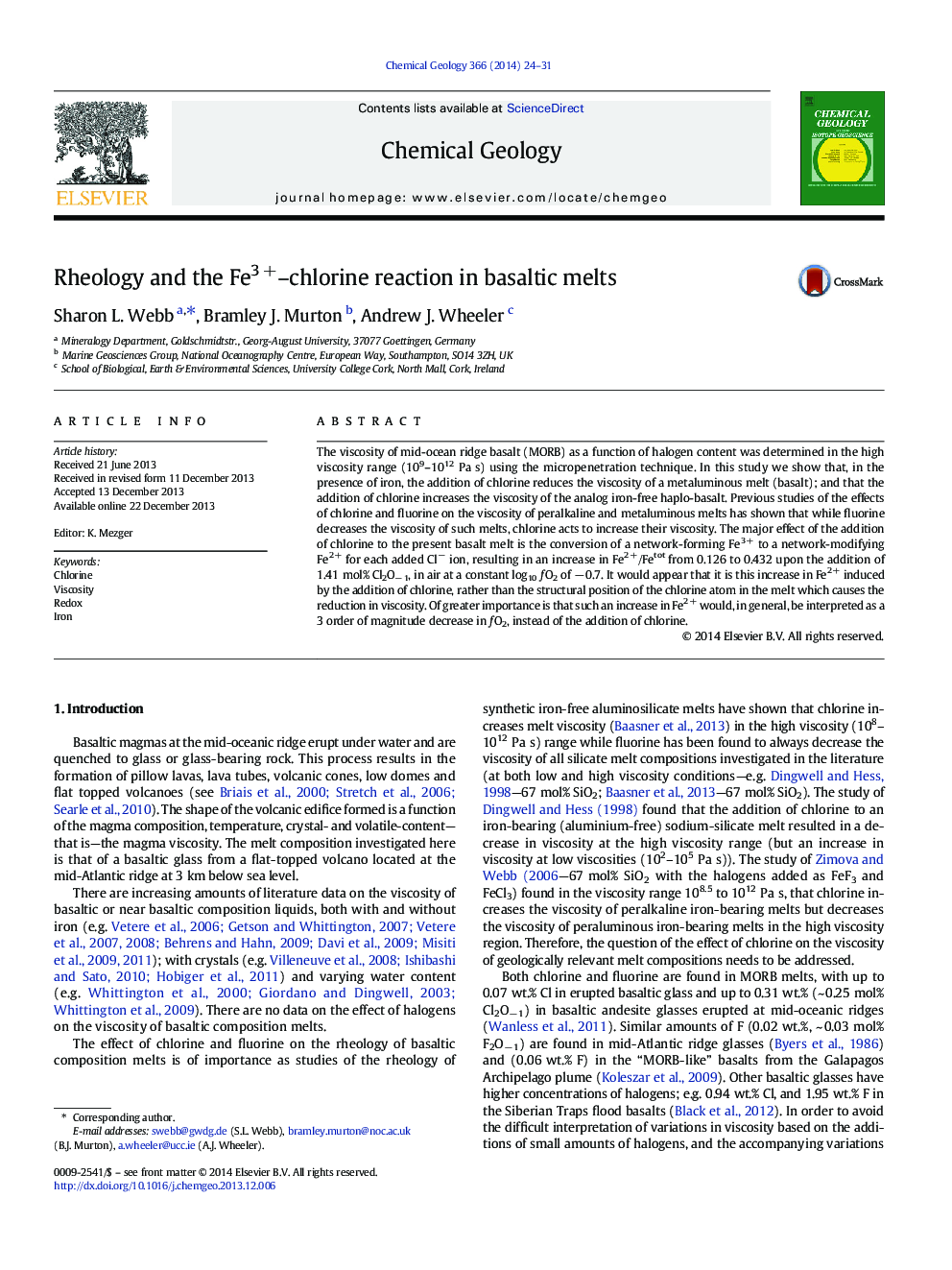| کد مقاله | کد نشریه | سال انتشار | مقاله انگلیسی | نسخه تمام متن |
|---|---|---|---|---|
| 4698844 | 1637604 | 2014 | 8 صفحه PDF | دانلود رایگان |

• The addition of chlorine to iron-free melts acts to increase melt viscosity.
• The addition of chlorine to a melt reduces Fe3 + to Fe2 +.
• The addition of chlorine to an iron-bearing melt results in a decrease in viscosity.
The viscosity of mid-ocean ridge basalt (MORB) as a function of halogen content was determined in the high viscosity range (109–1012 Pa s) using the micropenetration technique. In this study we show that, in the presence of iron, the addition of chlorine reduces the viscosity of a metaluminous melt (basalt); and that the addition of chlorine increases the viscosity of the analog iron-free haplo-basalt. Previous studies of the effects of chlorine and fluorine on the viscosity of peralkaline and metaluminous melts has shown that while fluorine decreases the viscosity of such melts, chlorine acts to increase their viscosity. The major effect of the addition of chlorine to the present basalt melt is the conversion of a network-forming Fe3 + to a network-modifying Fe2 + for each added Cl− ion, resulting in an increase in Fe2 +/Fetot from 0.126 to 0.432 upon the addition of 1.41 mol% Cl2O− 1, in air at a constant log10 ƒO2 of − 0.7. It would appear that it is this increase in Fe2 + induced by the addition of chlorine, rather than the structural position of the chlorine atom in the melt which causes the reduction in viscosity. Of greater importance is that such an increase in Fe2 + would, in general, be interpreted as a 3 order of magnitude decrease in ƒO2, instead of the addition of chlorine.
Journal: Chemical Geology - Volume 366, 14 February 2014, Pages 24–31